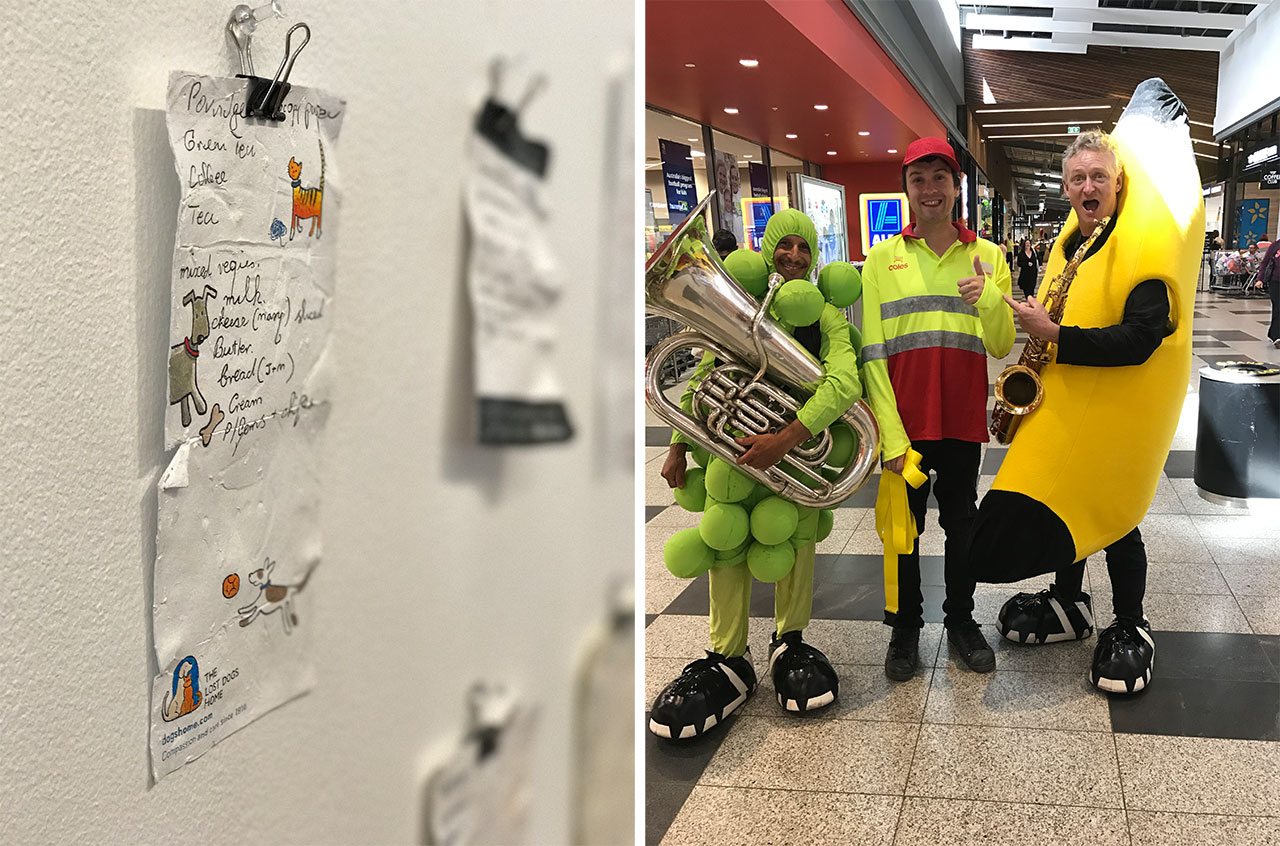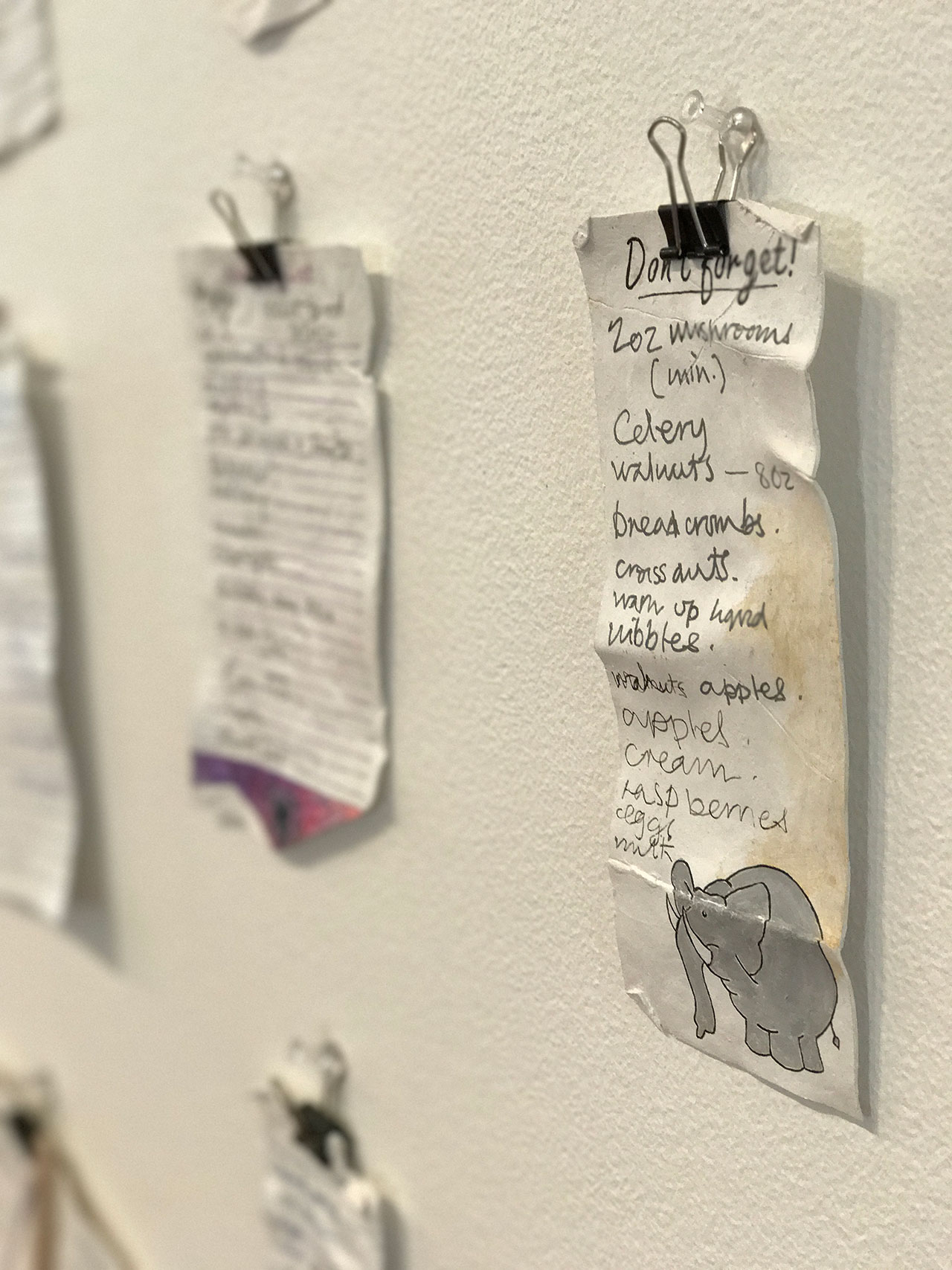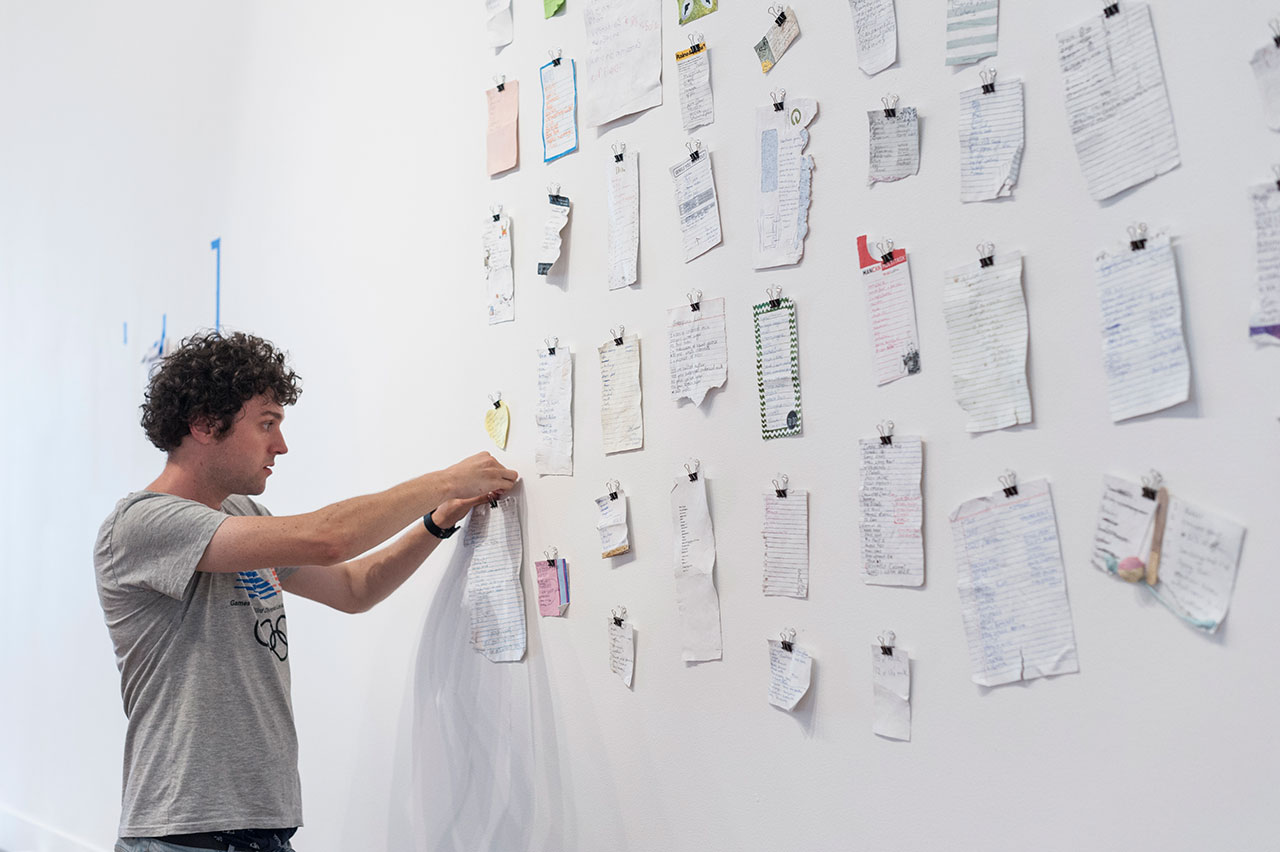News feed

Credit: Shot on iPhone
Kenny Pittock has over two thousand shopping lists that are not his own.
Fifty-two of those are the subject of a staggering work, Fifty-two found shopping lists written by people who need milk, which last month earned Pittock the Redlands Konica Minolta Art Prize in its emerging artist category. Though its subject matter is ostensibly quotidian, the work is anything but.
Fifty-two found shopping lists written by people who need milk is unassuming, inviting closer examination from its viewer. It is precise in its execution and strangely poignant (and oftentimes humorous) in its intimate evocation of the lives of its subjects. True to its name, the artist has faithfully and painstakingly reproduced the titular shopping lists using white earthenware ceramic to create a fragile yet permanent record of an impermanent practice, testament not only to the mutual banality of our lives, but the carelessness with which we consume and disregard.
Each note is uncanny in its verisimilitude and infinitesimal attention to detail. A pale pink rectangular note conveys a need for milk in perfect hiragana characters; another featuring a meal plan for the week (‘Sunday: corned beef; Monday: sweet and sour chicken’, in case you’re wondering) comes faithfully affixed with a pastel lollipop and Chocolate paddlepop stick; another features a ‘Thank you baby xx’ note in the corner punctuated with a rudimentary smile. Some are stained, trampled, and some retain a state that’s close to immaculate. All are fascinating.

At left, a detail from Fifty-two found shopping lists written by people who need milk, which uses white earthenware ceramic to materially appropriate paper shopping lists; at right, the artist Kenny Pittock supplements his fine art practice working at a shopping centre in Melbourne
Credit: Shot on iPhone/Courtesy of the artist
Pittock, 28, has been taking ceramics “very seriously” for, he estimates, about seven years since he was reintroduced to the medium at the Victorian College of Arts. “And when I say ‘taking very seriously’, I’m making sculptures of chocolate bars and Princess Leia action figures.” More often than not, his subject matter takes shape from the things that lie immediately around him. He has just finished making a Gold Logie, and before that, an ARIA Award – two things he simply saw on television; a series of books is currently in the works for an upcoming charity exhibition; a life size vending machine made of wood and full of smaller ceramic sculptures takes up a corner of his studio.
Until last year, Pittock commuted into his city studio from his home in the city’s south east on the train, during which time he would draw portraits of his fellow passengers – a hangover pastime from his days as a student. Pittock’s earliest portraits of other train travellers caught the eye of Melbourne-based artist Callum Morton, who guest curated the Redlands Prize and was a sessional painting tutor during Pittock’s time at the VCA, in Pittock’s first year at college.
“I remember he walked by my studio and saw a painting of Mr Squiggle on my easel. He said, ‘Did you paint that? You’ve got your chops’ and then he walked off. That was a big moment.”

Credit: Shot on iPhone
For his part curating the Redlands Prize, Morton (who also won the 2013 edition of the prize) nominated 20 established artists, one of whom was Jon Campbell, who in turn selected 20 emerging artists of their own to submit a single recent work for contention. Ultimately, Brisbane-based painter Dina Georgetti’s stunning study in geometry, The Humanity of Construction Painting, received the prize in the established artist category. At a preview of the resulting exhibition, Morton disclosed that his self-imposed curatorial stipulations meant that he selected artists whose work had never been included in the prize, with a strong focus also placed on including collaborative artists’ groups who he said remain underrepresented in mainstream prizes.
A strong focus on artists who enjoy a direct connection to and conversation with the next generation of artists also guided his choices, resulting in the inclusion of artists like Campbell, who was Pittock’s mentor during his honours year at the VCA. In the years since, the two have since become close friends. Pittock counts another artist featured in the show, Lisa Radford, as being amongst his mentors. Despite the differences in their work, Pittock says the three operate on a similar wavelength yet share an interest in the flotsam of ‘Australiana’ – the faces of transient commuters included.
“I would show the people [their portraits] and it would be this nice, sort of, little moment. They were portraits in the same way that these shopping lists function. When you put them all together it creates a portrait of the train line as much as it creates a portrait of a supermarket.”

Credit: Courtesy of the artist and the Redlands Konica Minolta Art Prize
Like many teenagers, one of Pittock’s first jobs found him working in the dairy section of a supermarket. As if by unspoken collective consensus, apparently we have decided milk is best purchased at the end of a shopping trip and that the same aisle is the perfect place to abandon our shopping lists. Tasked with throwing out the lists, Pittock instead pocketed them and has been collecting them ever since. He has amassed dozens of folders filled with plastic sleeves of shopping lists since he began working weekends collecting trolleys at another supermarket last year to subsidise his art practice.
On arriving in his studio opposite Melbourne’s Queen Victoria Markets one weekend straight from working at the supermarket, Pittock emptied his pockets. He was struck not only by the sheer mass of abandoned lists, but their diversity of language and style, the scope of their needs and the lives they entailed. Pittock extracted those lists where milk was needed as a means of unifying a body of work and set about sculpting. One of the greatest challenges the lists posed lay in their precise replication, in faithfully mapping out the topography of their folds, the wear and tear unique to each piece of domestic detritus. Pittock says it’s near impossible to estimate the number of hours it took to amass the finished collection (each piece can take any number of days to sculpt, dry, fire, paint and dry again), but that – unlike time spent working at the supermarket – it was time enjoyably lost to the process.
“They kind of just made me laugh, and some of them are really sweet,” Pittock says of his lists. “There’s one in there that’s a letter to the tooth fairy. Another one’s a letter to someone’s dad. Shopping lists are generally written by someone only to be read by them so they kind of speak a language only they need to understand. Deciphering them is kind of interesting while you’re pushing the trolleys. It keeps your mind occupied and it gives you a bit of insight into the anonymous people walking down the aisles. They’re kind of little portraits, but also little poems.”
When Pittock was told he’d won the Redlands Prize, he was holding a list he’d found the day before.
“It had ‘chicken titties’ on it. I’d never seen it written like that. Sometimes the language throws. I think in a lot of cases it’s one of the few times people actually handwrite. I think a lot of people use their phone for lists these days, but you still see people walk around a supermarket clutching shopping lists.”
The 2017 Redlands Konica Minolta Art Prize will be exhibited until May 20 at the National Art School Gallery. The exhibition is free-of-charge and open to the public. Works included in the prize are available for purchase (with the exception of Pittock and Georgetti’s winning works).
You can find out more information here.
Tile and cover image: Courtesy of the artist and the Redlands Konica Minolta Art Prize










